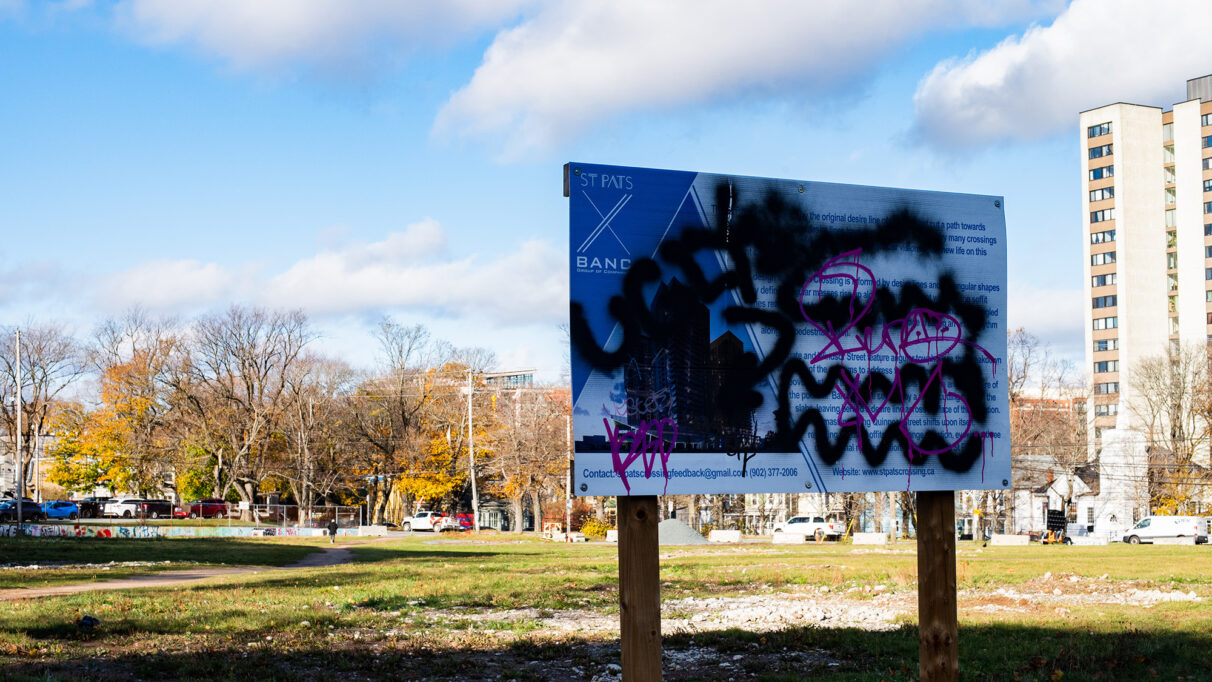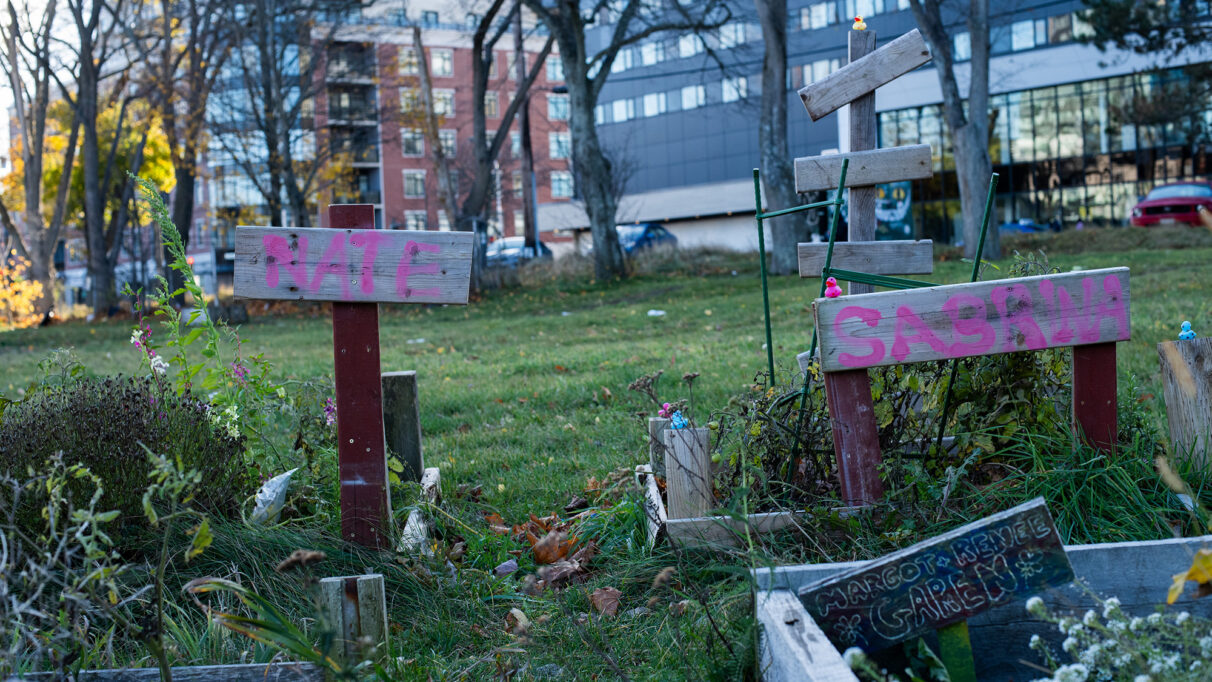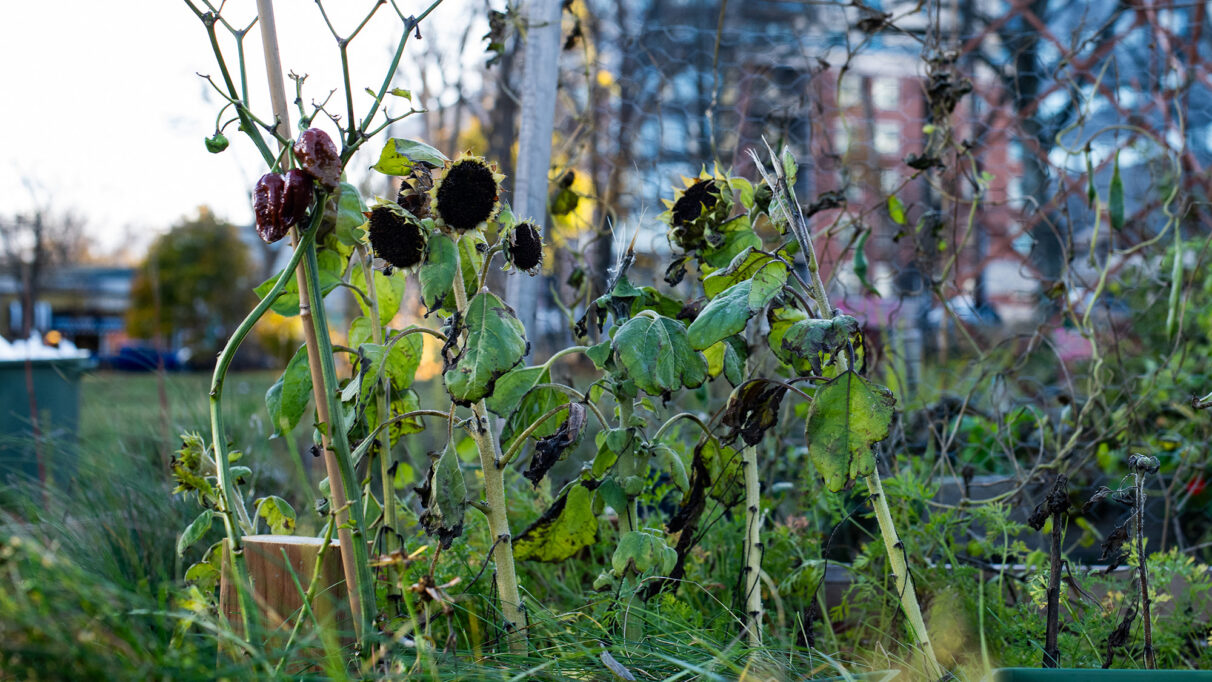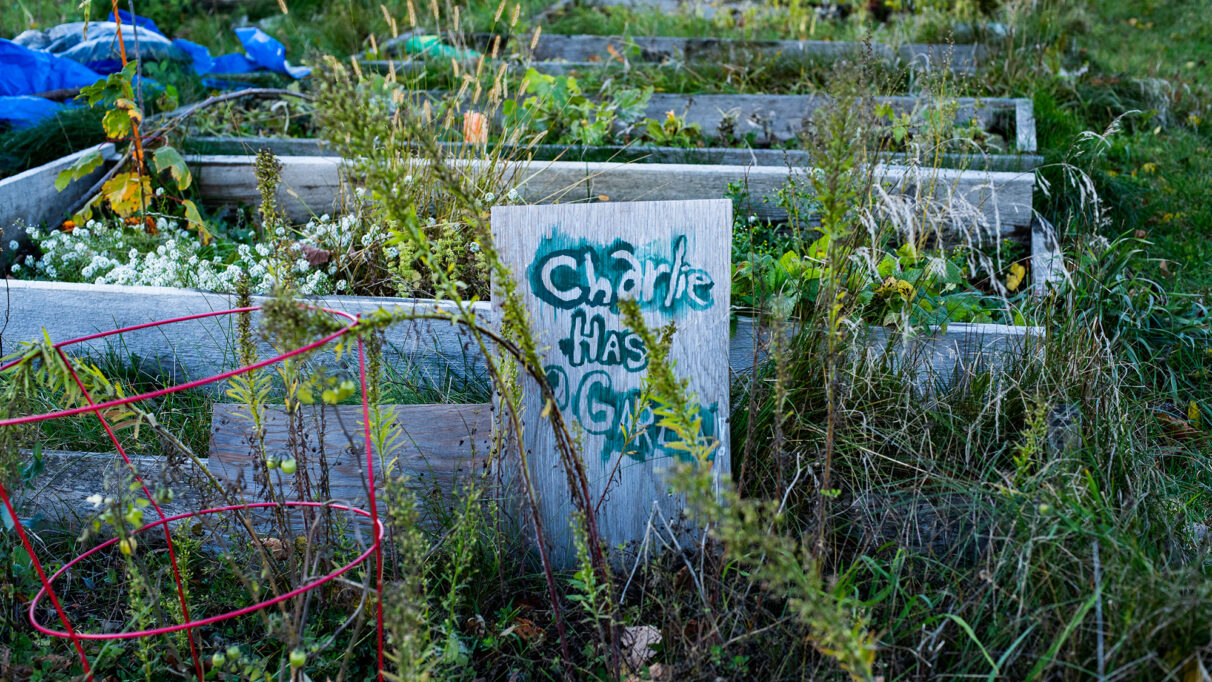Losing the (p)lot: Gardeners fear being uprooted
St. Patrick's greenspace slated for eventual development

caption
A sign at Quinpool Commons greenspace invites gardeners to claim a garden bed by making a name sign.Five years after Halifax sold the former St. Patrick’s High School site to BANC Group for $37 million, the three-acre property remains vacant — except for 10 community garden beds carved into its northwest corner.
With the threat of eviction looming, members of the garden — Quinpool Commons, founded in 2017 — say they are left in the dark by developers as they try to protect the land’s future.
The empty St. Patrick’s site is a privately-owned site that has been used by the public for years. The green space serves as a footpath connecting Windsor Street and Quinpool Road, a dog park, and a gathering place. But the land is owned by BANC Group, and proposals for their St. Pats Crossing development line the perimeter.

caption
BANC Group’s St. Pats Crossing proposal notice is covered in graffiti.Gardener Eileen Roth said the developer has not reached out to the group since the 2020 land deal.
“We’re always a little bit ready to act. At least to show up, put our bodies here and let it be known that there are people who care about this space,” Roth said. Earlier this year, the garden sent an open letter to city council demanding the protection of public land.
“We don’t have to make it easy for them. We don’t have to disassemble our garden beds and go home,” she said.
The old high school site, declared surplus in 2014, was zoned for high-density development in 2019. District councillor Sean Cleary, now serving his ninth year on the city council, says the land’s zoning is meant to address an urgent need for housing and redevelopment in the city’s serviced areas.
When Cleary looks at the surplus land at St. Patrick’s, he sees an ideal opportunity for development.
“Once we declare our land as surplus, it’s surplus, and we sell it,” he said, referring to the land deal with BANC. “Sites like St. Pat’s are perfect for large-scale urban development.”
When asked about the garden’s open letter, Cleary said he could not recall receiving it, adding that the council receives hundreds of requests and cannot respond to them all.
“It’s one of the beauties of living in a diverse, pluralist society. There is no way you can accommodate everybody,” Cleary said.
BANC Group president Alex Halef did not respond to The Signal’s request for comment.
Guerrilla gardening — or gardening on land without a legal permit — is often used to express dissatisfaction with the social and material conditions of urban life. According to Roth, others in the group are eager to contribute to the conversation about land use in Halifax.
“Everything we do here is a political act,” Roth said. “It’s politicized by a city that wants us to seek permits and follow bylaws made by a colonial structure.”

caption
Three garden beds with name signs at the Quinpool Commons community garden.Omri Haiven, a founding Quinpool Commons gardener and St. Patrick’s alumnus, sees the empty lot as a valuable public asset in an increasingly privatized city.
“Halifax is shrinking,” he said. “Not physically, but the social and communal life of Halifax is shrinking. The commons are shrinking.”
Pointing out the site’s prolonged vacancy, Haiven says he thinks private landowners profit off the hollowing out of publicly used spaces.
“The city is allowing for these parcels of land to sit vacant with barely any consequence faced by the developers,” he said. “It’s eroding public trust.”
City council is currently considering the Bloomfield Act, which is meant to address concerns surrounding developers buying land and neglecting it for long periods. The bill is still in motion but, if passed, will allow municipalities to tax vacant properties.
The act is named after the former Bloomfield School site on Agricola Street, which was partially destroyed by a fire in February 2025. The fire ripped through the complex four years after BANC Group purchased it, and following delays in demolition.
Two years before the fire, Halef told the CBC that he was struggling to cover the demolition costs of the Bloomfield buildings. After the fire, the city became responsible for covering immediate demolition costs under the Fire Safety Act.

caption
Peppers and sunflowers begin to dry out as the months get colder.Peggy Cameron of Development Options Halifax, an organization advocating for alternative development options, said the fate of St. Patrick’s was decided without considering community needs. She said the city’s public consultation process, dating back to 2015, was inadequate.
“They didn’t come to the public and say, ‘What would you like?’ They came with three proposals,” she said. “There were already different boxes or rectangles shaping the site.”
Cameron said there should have been an opportunity to discuss possibilities outside of commercial or residential development.
“We’ve lost St. Patrick-Alexandra School, Queen Elizabeth High School, the Bloomfield School, and St. Patrick’s High School. These were all public lands where schools existed, and communities gathered. These lands ought to have had a future use for society,” she said.

caption
A thicket of plants in a garden bed claimed by a gardener named Charlie.About the author

Olivia Nitti
Olivia is in the One-Year Bachelor of Journalism program at the University of King's College.

Leave a Reply